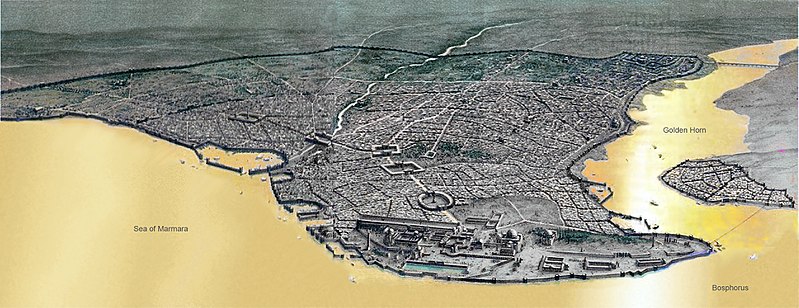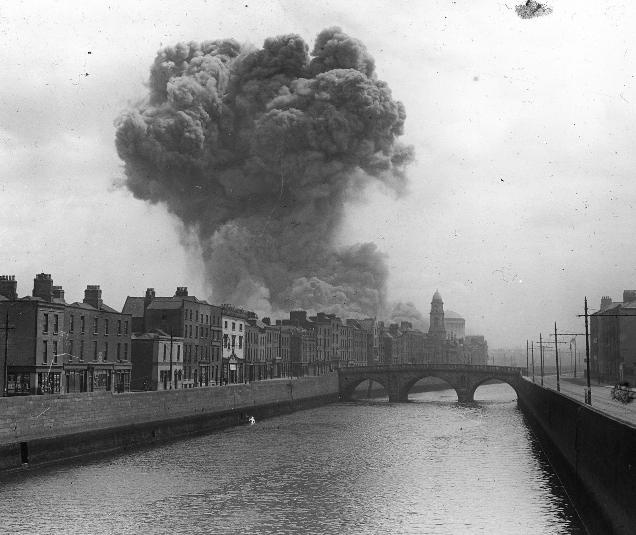For Garrett.
1. There are some astounding lines in here:
"Now I shall make my soul."Yeats is working with lines that, when taken out of context like this, appear to mean one thing but, when read in the poem, mean something different. This is interesting structurally, but I find the constant shift between what is implied and what is actually said to be fatiguing over the length of this whole collection.
"What shall I do with this absurdity—"
"Strange, but the man who made the song was blind."
"He stumbled, tumbled, fumbled to and fro."
"The salmon-falls, the mackerel-crowded seas,"
"Having inherited a vigorous mind"
"It is time that I wrote my will,"
"Life overflows without ambitious pains;"
2. In the first two poems I see a combination of The Wind Among the Reeds and Michael Robartes and the Dancer. The former plays with words and is easy to understand. The second constructs complex patterns and is wider ranging in thoughts and topics, circling and including and ruminating towards a conclusion. This collection draws from both, but might not do either as well as those earlier works.
3. The second poem, titular, is very tight. It is constructed like "A Prayer for My Daughter": it starts simply, confronting aging, then goes ranging wide before coming back to a concise close. At first it seems somewhat rambling, but each example, thought, and memory is called back in later to influence other thoughts. Every one. This is controlled, and tight. But, the seeming divergences risk sidetracking and losing me when they first appear. Yeats does not connect them clearly enough until later in the poem, and that's my biggest problem here.
4. Here, Yeats' long poems are not quite as good as his shorter ones. And with the dates they were written, I suspect these are B-sides interspersed with shorter poems. I know that's terrible, but the disparity of poetic quality in my perception is that great. I think the rhyme schemes often hurt the longer poems by forcing them into too patterned a cadence. In the first poem, the enjambment really works, and I wonder if the longer poems should have had more of it to break them from their overpowering pattern.
5. His repetition is often immediate and often exact:
"A faithful love, a faithful love."This pauses the poem, allowing the reader time to reflect. Yeats also uses some formulaic repetition: "self-sown, self-begotten." But I end up wishing there was more, and more varied, repetition and formulaic repetition. I've seen him use both so extensively and well in the past that I wonder why he sets them aside. They're scarce in this collection. Why? Is he trying to say something that he feels they will not help? Is he bored with them? Is he pushing himself away from them?
"Are but loose thread, are but loose thread."
6. "Owen Aherne and His Dancers": what a great poem! Repetition here comes back in force, but it's not the formulaic, almost repetition of a phrase, rather it's repeated words that take the stage: wind and wild, heart and mad, cage and run. This poem discusses the poet's own thoughts and feelings and contrasts them with each other. These long lines are used to allow large words space to be couched in sense-making phrases. It worries at a sliver of thought, at the reaction to the aging, and approaches it from multiple sides at once: eventually putting the aging man in his place, and the young in theirs. But it's all set in longing—an old man for a young woman's beauty and activity. Through this specific situation, the people are all placed in their proper realms—and even the poet's heart and mind are situated.
7. I also liked "Meditations in Time of Civil War" with its uncomfortable honesty, shame, and look at how people exist during Civil War times: not extraordinarily, but mundanely. Just a bunch of glimpses of life during this time period, but together they're greater than the sum of their parts.
8. "The New Faces" complexly weaves a number of phrases in this mystic, paradoxical reflection on one lover dying before the other. The stilted, stopping, jagged, cut-up rhythm and cadence supports this theme and reflects the mental state of the partner left behind. Brilliant pairing of structure and theme.
9. Due to the rambling, wide ranging, sidetracking nature of these poems, they're often difficult at first read—and without relying upon repetition but being forced into a rhyme scheme, the sounds do more to confuse the reader than carry them through. These are not poems whose progression is standard logic or easy to follow at first. But once the logic is revealed at the end, the second read is more rewarding than the first. To restate this in gallery art terms, these look jumbled from 20 feet away, somewhat clearer from 10 feet, and still more clear from five. But these too often require deep study just to get the gist of it. And in this way I think these are mostly failed experiments. Fascinating and at times breathtaking, but failed.
10. The theme here is contradictions or contrasts and learning to appreciate both sides of them: old and young, love and loneliness, Civil War and the day-to-day mechanics of life, etc. These are sometimes a grass-is-greener longing, and sometimes a condemnation, but always appreciative of both sides and wishing for their combination. Like in "The Tower", where a song praising a country-maid's beauty leads to a drowning:
Strange, but the man who made the song was blind;Those two lines, "Oh may the moon and sunlight seem / One inextricable beam," are key to the whole collection, and stunningly beautiful. He longs for the binding of the paradox, the understanding of both moon and sun as one, the mystical. The place where the best of both sides of the contradiction come together and shed off their negatives: the vigor and beauty of youth with the imagination and experience of age; the triumph of silent solitude and the togetherness of love; the spirit that drives men towards freedom and that which drives them to a paycheck. And this theme of contrasts is supported by both word choices and sentence structures—long and short lines exist in the same poems, monosyllabic and multisyllabic words all have meaning and importance, poems of many parts and poems of one stanza share pages in the same collection, longer poems embrace multiple forms to make multiple points. This interaction of theme and mechanics shows how holistic Yeats' writing has become by this stage. It's a staggering display of skill.
Yet, now I have considered it, I find
That nothing strange; the tragedy began
With Homer that was a blind man,
And Helen has all living hearts betrayed.
Oh may the moon and sunlight seem
One inextricable beam,
For if I triumph I must make men mad.
11. My favorites are: "Owen Aherne and His Dancers", "Meditations in Time of Civil War", "The New Faces", "Youth and Age", and "Sailing to Byzantium", that classic mythical poem. I almost would put "The Tower" on this list, there're some incredible lines in there but I just can't.




.jpg/800px-Dancing_(8517245863).jpg)

No comments:
Post a Comment